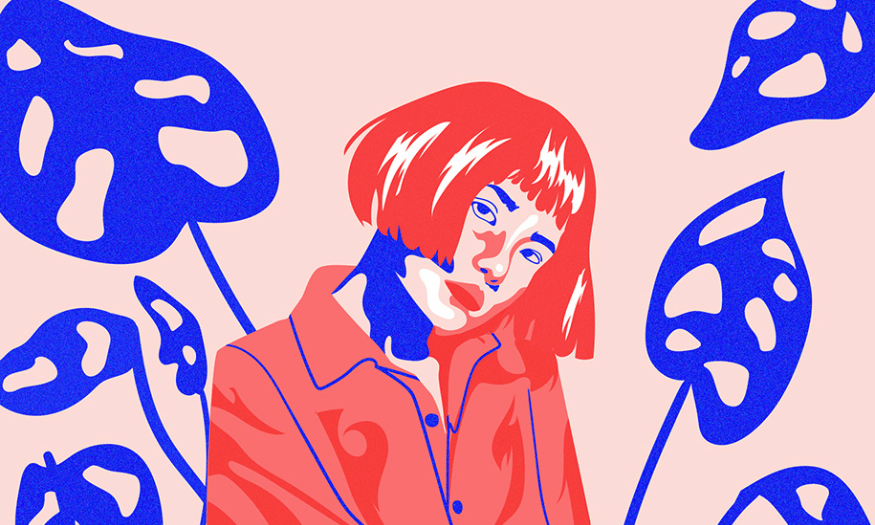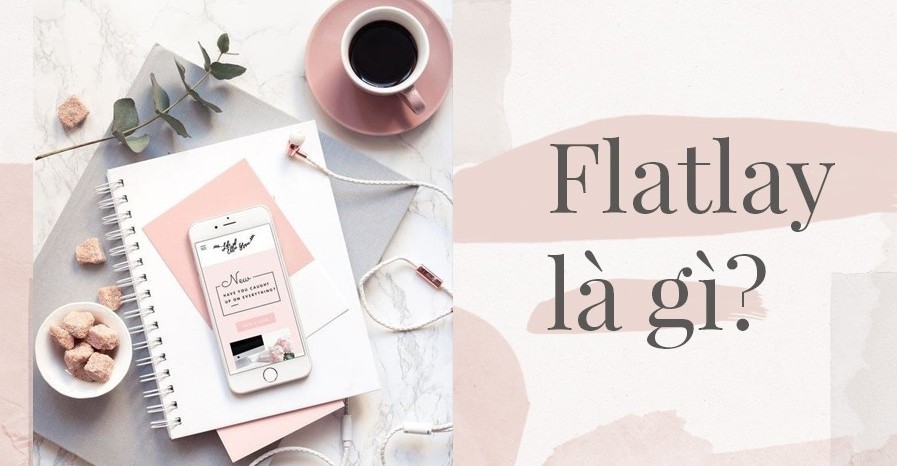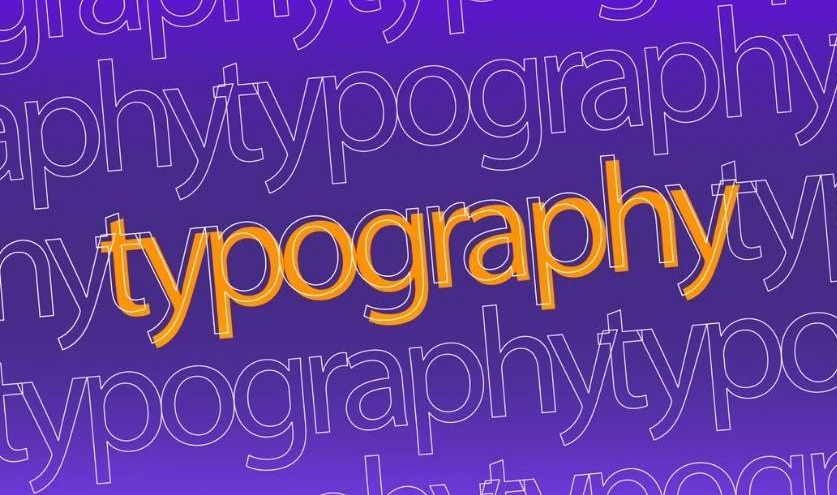Best Selling Products
Graphic Design Tips to Enhance Your Work
Nội dung
- 1. Limit the number of fonts you use
- 2. Change the size and height of the text to make it fit perfectly with your design
- 3. Use contrasting fonts to attract attention
- 4. The bigger the more attention it attracts
- 5. Use contrasting colors
- 6. Use white space when you can
- 7. Be consistent in your design
- 8. Use flat design to your advantage
- 9. Learn to use a grid
- 10. Choose the right design software
- 11. Conclusion
In the modern world of graphic design, creating impressive works depends not only on artistic talent but also on the right design techniques and tips. To upgrade their work, designers need to have a good understanding of the basic principles of design, use effective tools and always update new trends. In this article, Sadesign will provide you with useful graphic design tips, helping you create outstanding products and attract the attention of viewers.

In the modern world of graphic design, creating impressive works depends not only on artistic talent but also on the right design techniques and tips. To upgrade their work, designers need to have a good understanding of the basic principles of design, use effective tools and always update new trends. In this article, Sadesign will provide you with useful graphic design tips, helping you create outstanding products and attract the attention of viewers.
1. Limit the number of fonts you use
One of the most important design tips that many designers recommend is to limit the number of fonts in a piece. Using too many fonts can lead to confusion and make your design difficult to understand. Instead of trying to be creative by using many different fonts, focus on creating harmony. A simple rule of thumb is to stick to two to three fonts in a single design. This will not only make your piece look more professional but will also ensure that the message is clearly conveyed.
When choosing fonts, pay attention to how they interact with each other. Fonts should have similar styles or emotions to create a unified design. You can experiment with existing fonts, but be sure to test their feasibility. If you want to refresh your design, don’t hesitate to search for free fonts from online libraries. This will not only save you time but also give you a variety of unique options.
Finally, once you have chosen your font, make sure it is easy to read and appropriate for the purpose of your piece. A font that is too complex can make it difficult for the viewer to absorb the information. On the other hand, a simple yet striking font will help you attract attention and convey your message more effectively.
2. Change the size and height of the text to make it fit perfectly with your design
Another important design tip is to adjust the size and height of your text to fit the overall design. This not only creates balance but also helps to highlight the message you want to convey. You can change the line height and the spacing between letters to create a visually appealing effect. For example, reducing the line height can create a tighter feel, while increasing the font size can make the content stand out more.
Experiment with the placement and layout of text in your design. A clear placement will help the viewer absorb information more easily. Sometimes, adjusting the opacity of the text can also create an interesting effect. Reducing the opacity can make the background image stand out more, while also creating a sense of harmony throughout the design.
Also, remember that lighting and shadows can have a big impact on how text appears. Using the right shadows or lighting can make text stand out more, while also adding depth to your work. All of these elements contribute to a professional and engaging graphic design.
.png)
3. Use contrasting fonts to attract attention
One of the most effective ways to create emphasis in your design is to use contrasting fonts. Combining different font types can create a powerful effect, drawing the viewer’s attention to important parts of your design. For example, you could use a bold sanserif font for your main headline and a soft script font for your description. This contrast not only creates interest, but also helps to differentiate different sections of your content.
When using contrasting fonts, pay attention to size and style. Bold fonts are often appropriate for headlines or main messages, while lighter fonts can be used for secondary content. This makes it easier for viewers to immediately recognize important information, while creating a pleasant reading experience.
Finally, don’t forget to test the interaction between fonts. Make sure they not only contrast visually but also complement each other in content. This combination will help you create a more impressive design that will have a greater impact on the viewer. Practice and experiment with different font pairings to find your own style.
4. The bigger the more attention it attracts
In graphic design, the size of objects has a big impact on how viewers perceive information. A basic rule of thumb is that larger elements attract more attention than smaller elements. This is not just a visual fact, but is also explained by the concept of visual hierarchy. When you design a piece, make sure that the main object stands out and is larger than the other elements around it. This way, you can guide the viewer’s gaze naturally and effectively.
Using large sizes not only helps to attract attention, but can also show the importance of the message you are trying to convey. For example, if you are designing a poster, make the headline larger and more prominent than the secondary information. This will make it easier for the viewer to see what is most important in your design. Remember, this attention also creates a sense of authority and trustworthiness for your brand or product.
However, it’s not always necessary to make everything big. Effective design is often a combination of large sizes and smaller elements to create contrast. Experiment with different sizes to find the perfect balance. This will not only help highlight the main message but also create a visually interesting experience for the viewer.
.png)
5. Use contrasting colors
Color is one of the most powerful tools in graphic design. Using contrasting colors can create a powerful visual impact and make your design stand out. When you combine opposing colors, you not only make your work more eye-catching, but you also make it easier for viewers to distinguish between different elements in your design. This contrast creates a sense of dynamism, draws attention, and evokes emotion.
When choosing contrasting colors, consider how they interact with each other. Light colors are often more appealing than dark colors, but combining light and dark colors can add depth and richness to a design. For example, using bright red on a white background will create a strong and striking feeling, while combining dark blue and bright yellow can create a harmonious and pleasant feeling.
Also, don’t forget that colors can evoke different emotions and associations. When using contrasting colors, consider the message you want to convey. Colors can affect the mood and feelings of viewers, so choose colors that are not only eye-catching but also appropriate for your message. A well-thought-out color scheme will not only attract attention but also create a lasting impression.
6. Use white space when you can
White space, also known as negative space, is an important design element that many people often overlook. Using white space properly can give your design an elegant and professional look. Instead of cramming too many elements, colors, or fonts into a small space, leave some empty areas to make your message clearer. This not only helps avoid confusion, but also creates a sense of comfort for the viewer.
When you use white space, you create focus for important elements in your design. This space allows viewers to easily identify key messages without being distracted by unnecessary elements. A design that uses white space properly creates balance and makes objects stand out, thereby enhancing the overall viewer experience.
Additionally, white space can also create a sense of elegance and modernity in your design. In a world full of information and images, using white space is not only a smart design strategy, but also a sign of confidence. By leaving space, you show that you are not afraid to show sophistication and simplicity in your work. Remember, sometimes less is more, and white space can become an integral part of your design.
.png)
7. Be consistent in your design
Consistency is a core element of graphic design. Not only does it help different elements in a piece work together, it also creates a stronger brand identity. When you maintain consistency in color, typography, spacing, and layout, your work is easier for viewers to recognize and remember. This is especially important in larger projects where multiple elements are combined.
When choosing a color palette, be consistent with the shades you choose. Using the same color palette not only helps to unify your design, but it also creates a professional feel. The same goes for fonts; choose about two to three typefaces and use them consistently throughout your design. This will help to create harmony and make your work easier to read and understand.
Consistency applies not only to visual elements but also to spatial elements. Pay attention to the spacing between objects, their position in the composition. A consistent design will bring a sense of security and comfort to the viewer, making it easier for them to receive the information you want to convey. Thus, consistency is the key to creating impressive and effective design work.
8. Use flat design to your advantage
Flat design has become a popular trend in the modern graphic world. In contrast to complex 3D elements, flat design offers simplicity, elegance, and accessibility. You don’t have to spend hours creating elaborate 3D effects; instead, you can focus on using shapes and colors to create beautiful compositions. This is especially helpful for beginner designers who may feel overwhelmed when working with complex tools.
One of the great benefits of flat design is its versatility in applying it to a wide range of projects, from websites to mobile apps to advertising. The simplicity of flat design not only makes information easily accessible to viewers, but also makes the image look sophisticated and modern. Elements such as bright colors, clear shapes, and sharp lines will help your design stand out to viewers.
Furthermore, flat design is also resource and time-efficient, allowing you to quickly create quality products without too much effort. This makes it an ideal choice for designers who want to convey a message effectively while still maintaining an attractive look. By adopting flat design, you can easily create impressive works without having to invest too much time in intricate details.
.png)
9. Learn to use a grid
Grids are an extremely useful tool in graphic design, helping you create a harmonious and organized layout. By using a grid, you can easily align the elements in your design, thereby creating a balanced and pleasing overall look for the viewer. Grids not only help you divide up space, but also assist in defining focal points and creating interactions between elements in the design.
There are many types of grids you can use, from simple grids to more complex ones, depending on the needs of your project. Understanding each type of grid and how to use them will help you improve your design skills. You can start with basic grids like the 12-column grid, which is commonly used in web design to create balance and flexibility in your layout.
Another benefit of using a grid is that it helps you maintain consistency in your design. When you have a clear grid, it becomes easier to arrange elements, which reduces clutter and creates a better visual experience for your viewers. Learn how to apply a grid to your designs, and you will find that it not only makes your work look more professional, but also saves you time in the process.
10. Choose the right design software
When starting your graphic design journey, choosing the right software is one of the most important decisions you will make. Among the many options on the market, Adobe Photoshop stands out as a powerful and versatile tool that is suitable for both beginners and seasoned professionals. With the ability to edit photos, design graphics, and create digital artwork, Photoshop has become the gold standard in the design industry.
One of the reasons why Photoshop is so popular is its rich features and high level of customization. You can easily manipulate layers, apply effects, and use a powerful set of drawing tools to create unique designs. Furthermore, Photoshop offers a wide range of plugins and filters to expand your creative capabilities. This allows you to do everything from simple photo editing to complex designs.
However, to optimize performance and take advantage of all the new features, regular software upgrades are essential. At Sadesign , we provide advanced Photoshop software to help you develop your design skills in the most effective way.
.png)
11. Conclusion
In conclusion, improving your graphic design work is not only a creative process but also a continuous learning journey. By applying the tips shared, you can improve your design skills and create works that are not only beautiful but also impactful. Remember, innovation and exploration never stop in this field. Good luck on your creative journey!












































